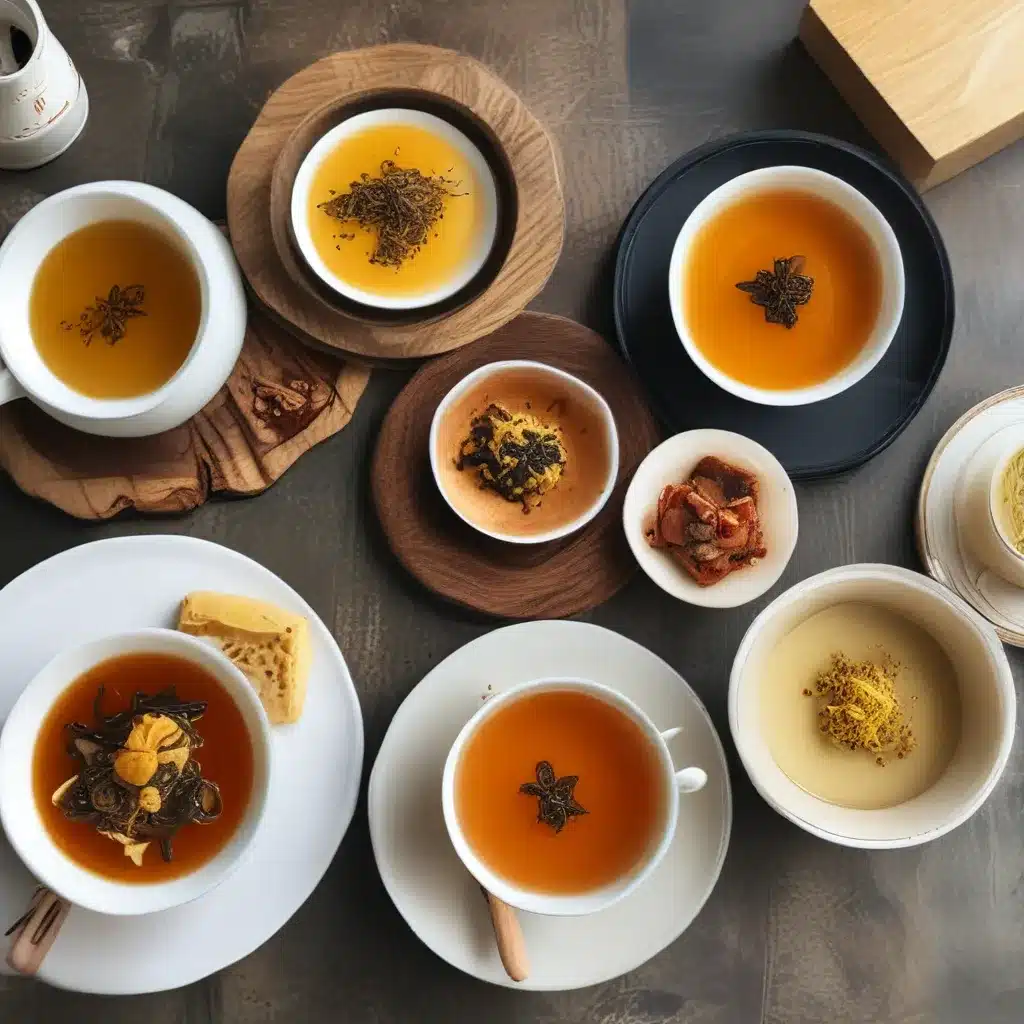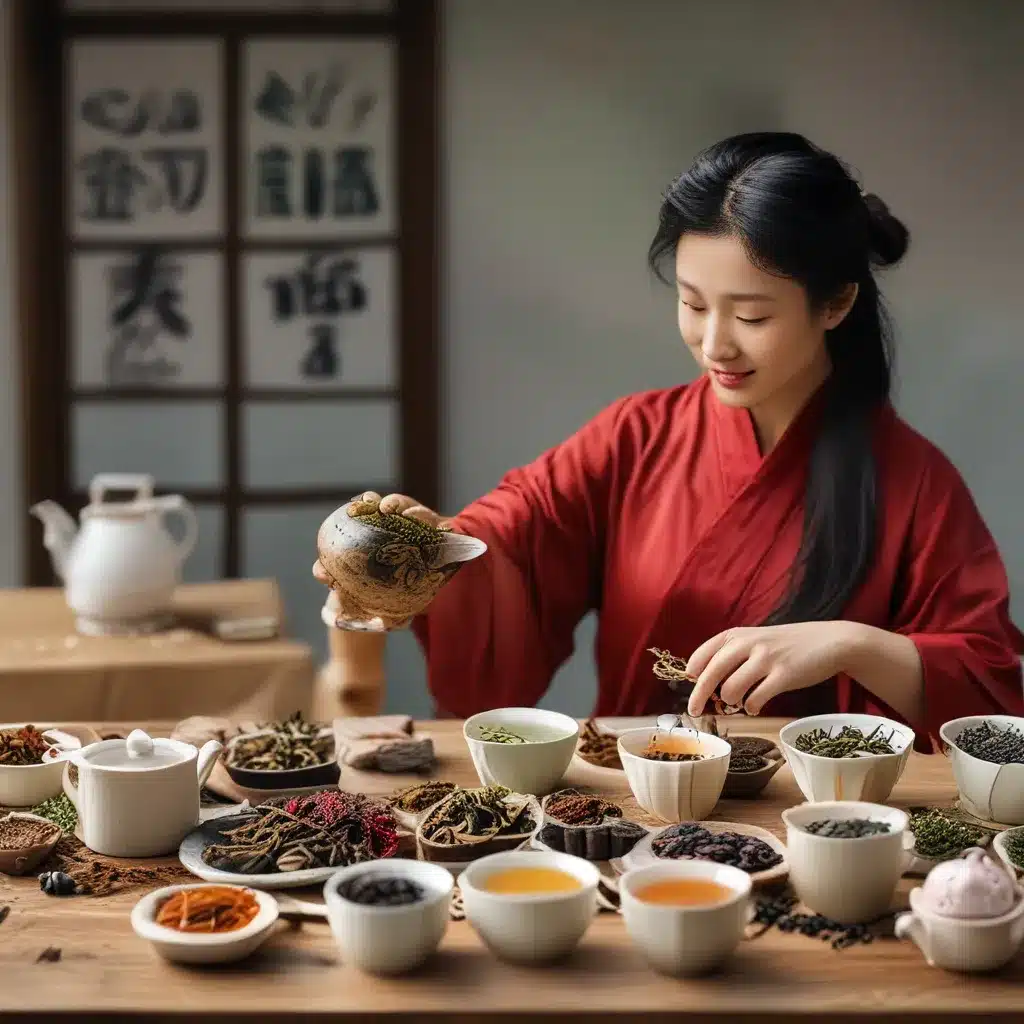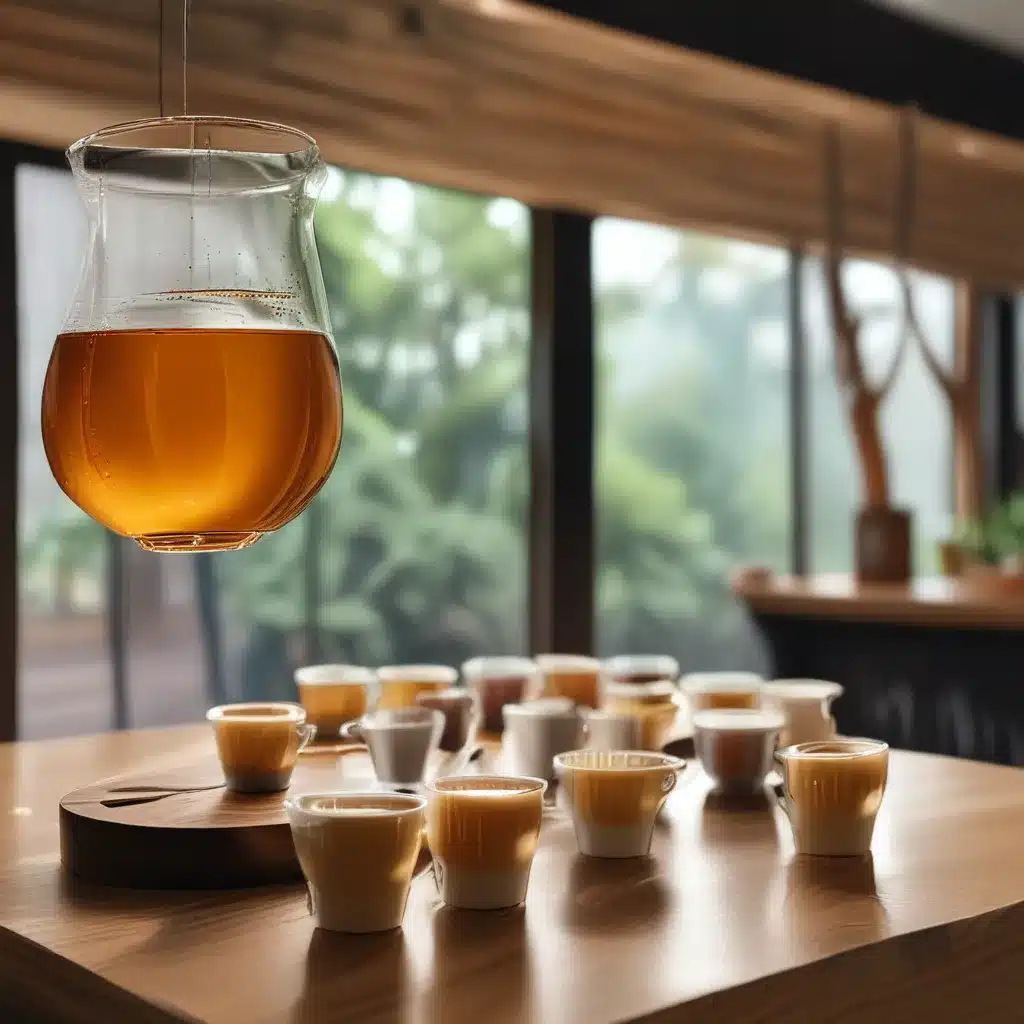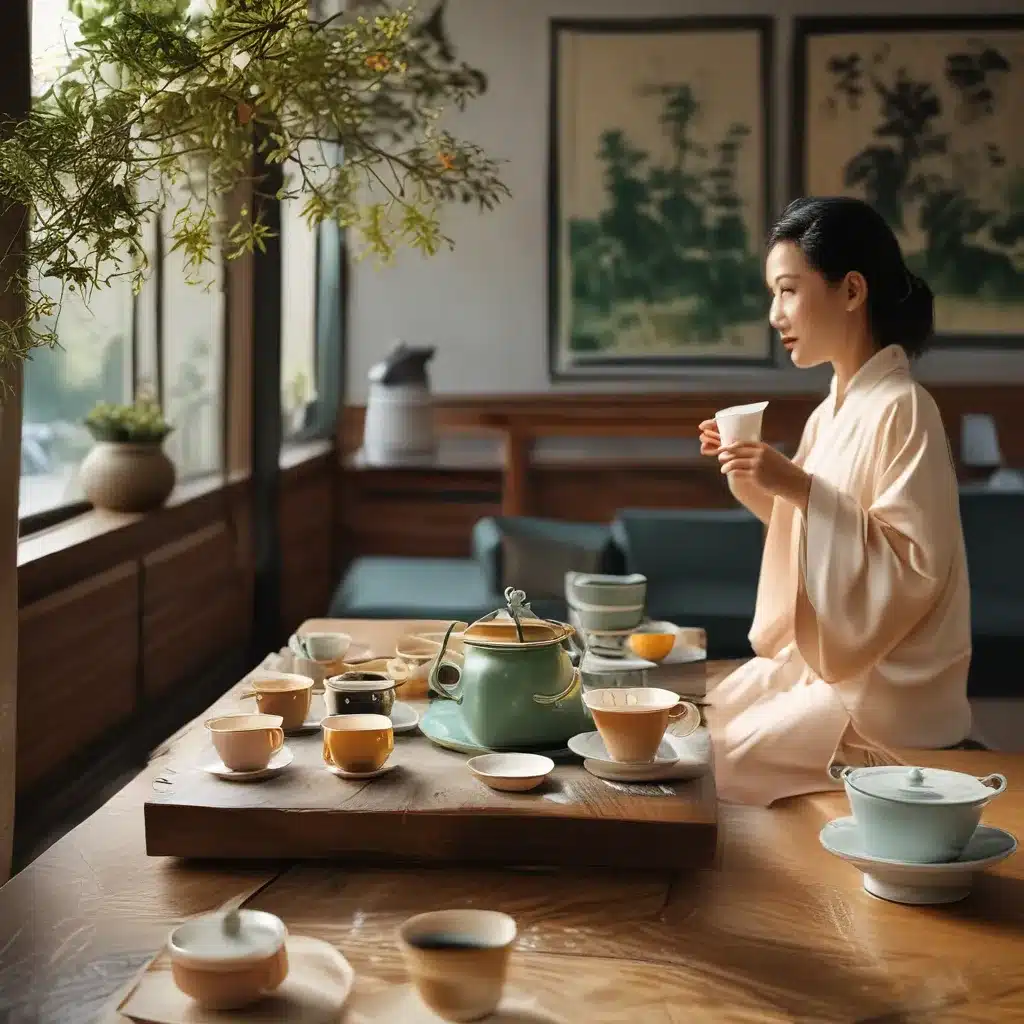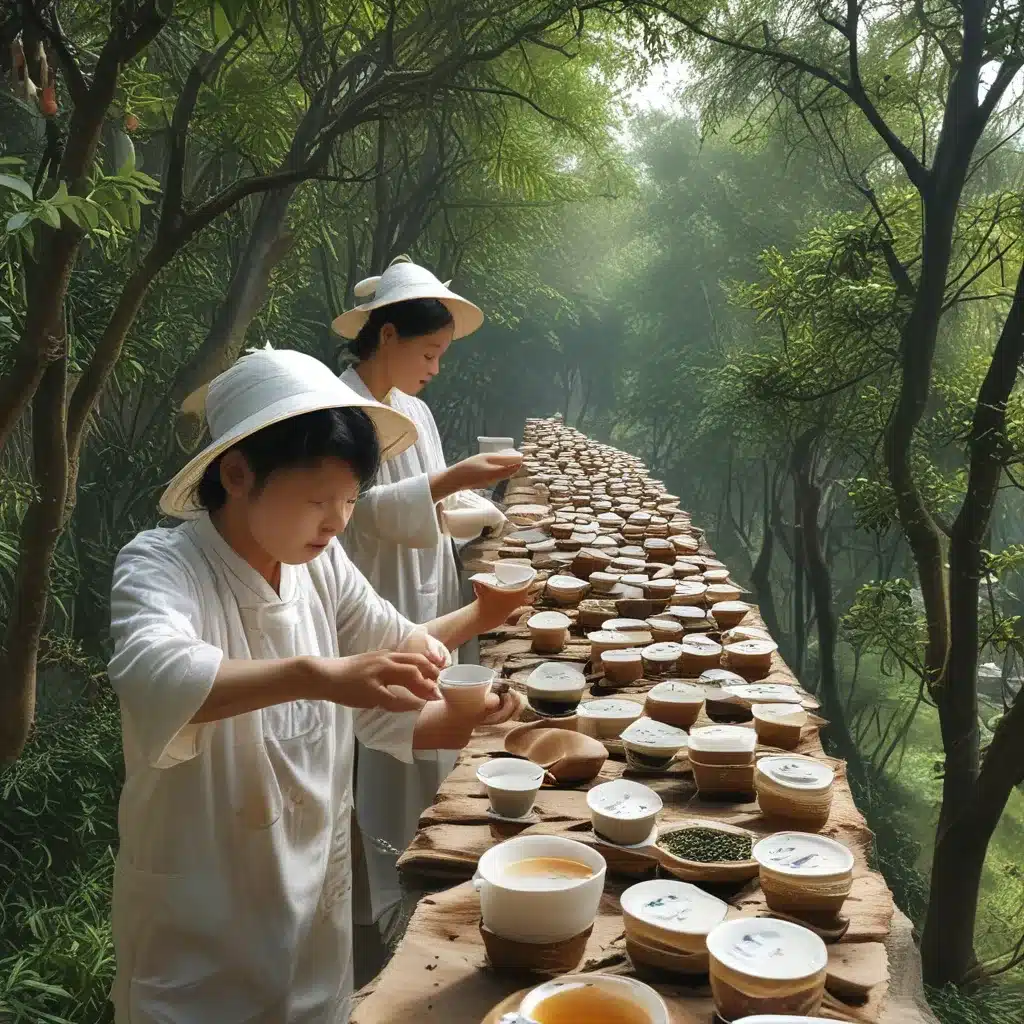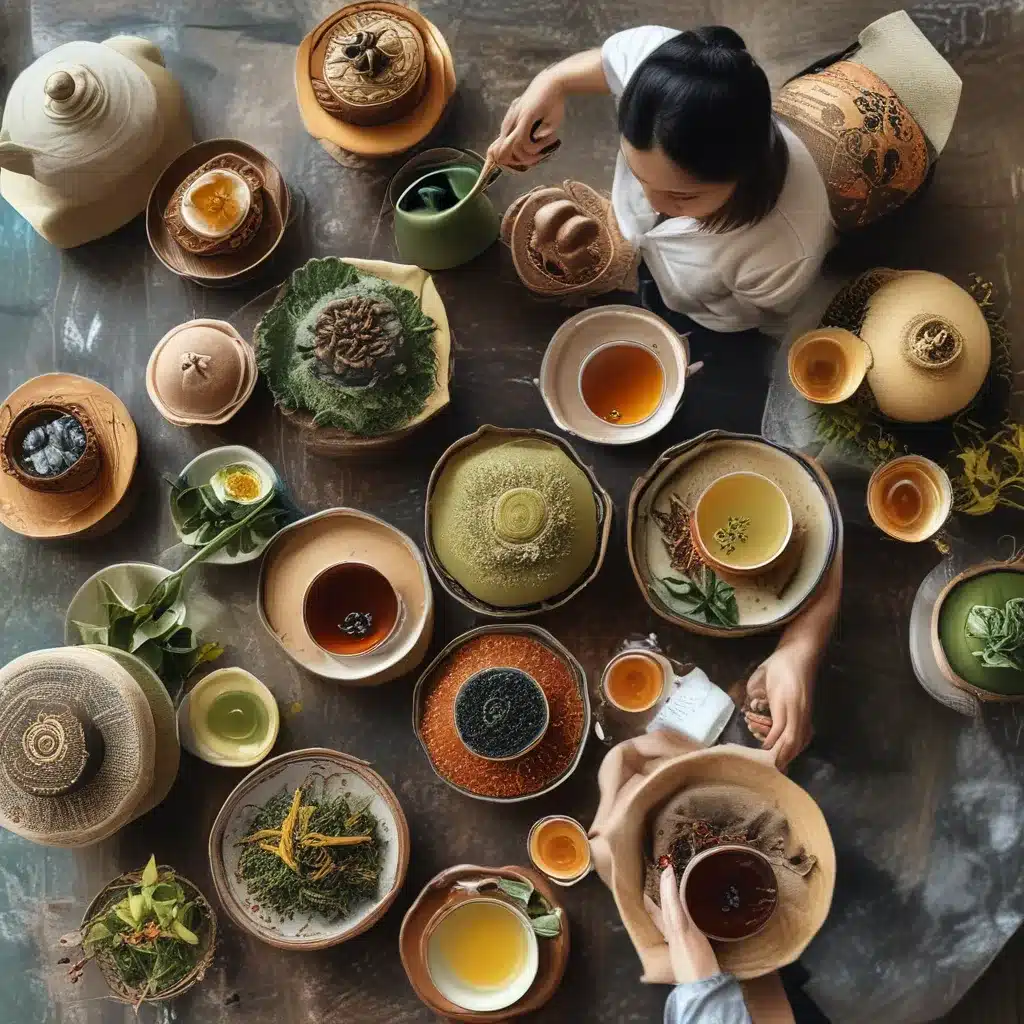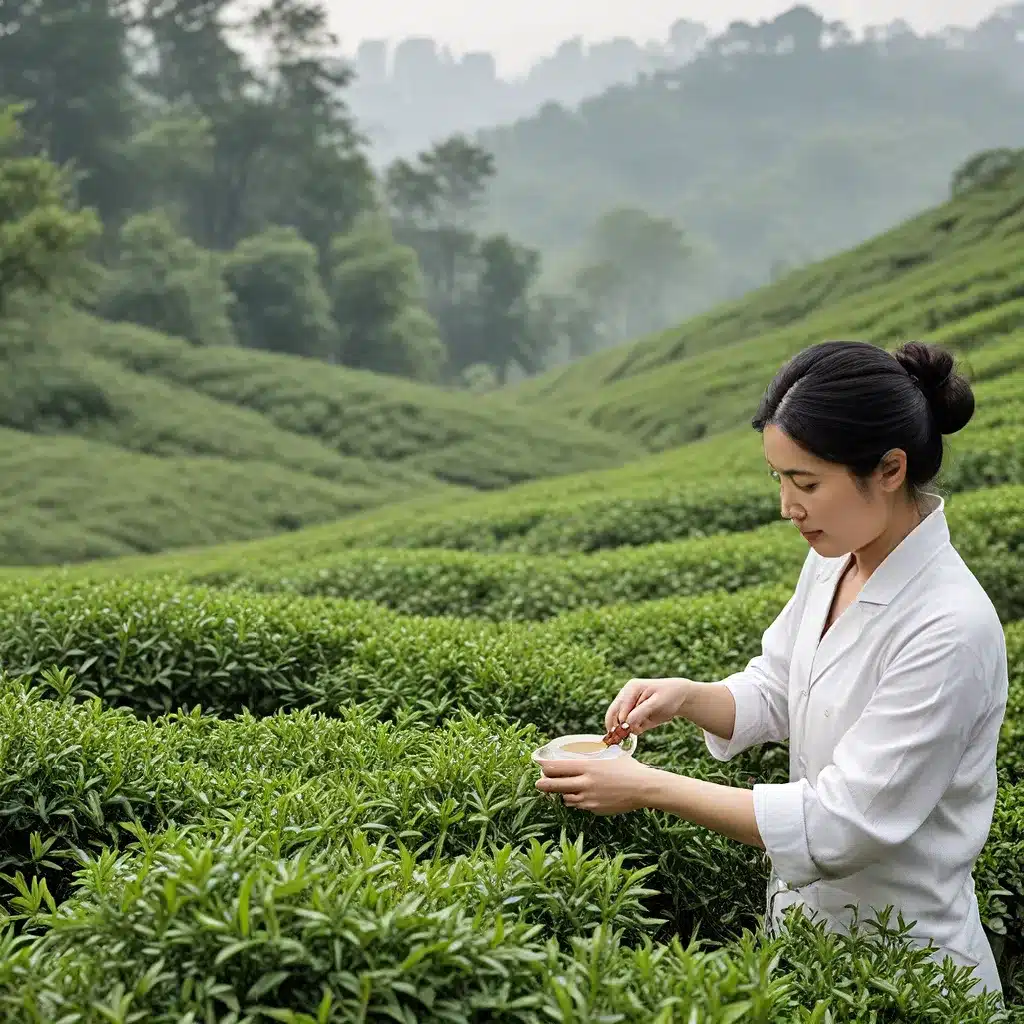
Discovering the Wonders of Shanghai’s Tea Culture
I’ll never forget the day I first stepped into a legendary teahouse in the heart of Shanghai’s Yu Gardens. As the rain gently pattered against the ornate windows, I was presented with an array of expertly crafted oolongs and longjing teas, each one a unique expression of the local terroir. That fateful afternoon ignited a lifelong passion for exploring the rich and varied tea traditions of this captivating city.
Growing up, my tea experience was mostly limited to the familiar teabags and occasional premium green tea sent by my grandmother in Japan. But that singular experience in Shanghai opened my eyes to an entirely new world of loose-leaf teas and the intricate rituals surrounding their preparation. I was amazed to learn that each variety has its own distinct flavor profile, shaped by the unique growing conditions of the region. It was as if I had been sipping wine all my life, only to discover the profound complexities of single-origin, terroir-driven teas.
Unearthing Shanghai’s Tea Treasures
As I delved deeper into the world of Shanghai cuisine and culture, I discovered that tea is not just a beverage, but a fundamental part of the city’s identity. From the historic teahouses of the Yu Gardens to the contemporary tea lounges of the Bund, the people of Shanghai have long revered tea as a vessel for connection, contemplation, and the celebration of their rich culinary heritage.
One of the first things I learned is that Shanghai’s tea varieties are the result of the city’s diverse landscapes and microclimates. The rolling hills, winding rivers, and rocky outcroppings of the surrounding regions all play a crucial role in shaping the flavors and aromas of the teas produced here. Just like wine, the terroir of a tea-growing area can impart subtle nuances that distinguish one varietal from another.
Exploring the Varieties of Shanghai Tea
One of the most renowned tea-producing regions near Shanghai is Wuyi Mountain, a UNESCO-listed national park known for its rugged, otherworldly landscapes and the production of prized oolong teas known as “rock teas” or Yan Cha. The unique growing conditions of the Zheng Yan area within Wuyi, with its mineral-rich soils and biodiverse microclimates, give rise to teas with a remarkable depth of flavor and complexity.
As I explored the Zheng Yan region with local tea grower Mr. Wu, I was struck by the painstaking attention to detail that goes into crafting these exceptional oolongs. From the precise timing of the spring harvest to the delicate hand-processing techniques, every step of the journey is carefully orchestrated to bring out the best in the leaves. The result is a tea that is both profoundly earthy and elegantly refined, with notes of stone fruit, toasted nuts, and a subtle mineral finish.
Beyond the renowned rock teas of Wuyi, Shanghai is also home to a diverse array of other regional tea varieties, each with its own captivating backstory and flavor profile. In the lush, misty hills of Longwu, for example, I discovered the delicate and fragrant longjing (or “dragon well”) teas, known for their delicate, vegetal sweetness and pale green liquor. And in the verdant Moganshan region, I was introduced to the rich, creamy oolongs that have become a beloved part of the local tea culture.
The Art of Tea Appreciation
As I immersed myself in Shanghai’s tea traditions, I came to appreciate the true artistry involved in cultivating, processing, and preparing these exquisite beverages. The goncha method of tea service, with its elegant yixing clay teapots and glass gaiwans, is not just a functional means of brewing – it’s a meditative ritual that engages all the senses.
I was captivated by the way the tea leaves unfurl in the hot water, releasing their captivating aromas and shifting flavors with each successive infusion. The act of carefully observing the color, clarity, and texture of the tea liquor becomes a form of mindfulness, a chance to slow down and savor the unique character of each variety.
But the true magic of Shanghai’s tea culture lies not just in the tasting, but in the stories behind each cup. As I sat with tea masters and growers, I was regaled with tales of family tea dynasties, ancient brewing methods passed down through generations, and the profound connections between the land, the climate, and the final product. It’s a reminder that the best teas are not just the result of technical expertise, but of a deep reverence for the natural world and the rhythms of the seasons.
Connecting with Shanghai’s Tea Heritage
Perhaps the most rewarding aspect of my tea journey in Shanghai has been the opportunity to connect with the people who dedicate their lives to preserving and elevating this rich cultural legacy. Whether it’s the tea growers meticulously tending to their family plots in Wuyi or the teahouse owners passionately educating their patrons on the art of gongfu cha, these individuals have a profound respect for the terroir and traditions that define Shanghai’s tea landscape.
One particular encounter that has stayed with me is my visit to the historic Huxinting Teahouse in the Yu Gardens. As I sipped on a delicate longjing, the owners shared the captivating history of this 150-year-old institution, which has played host to countless scholars, artists, and revolutionaries over the centuries. It was a humbling reminder that the simple act of enjoying a cup of tea can be a portal to deeper connections with a city’s cultural identity and collective memory.
Savoring the Flavors of Shanghai’s Tea Terroir
As I reflect on my tea-fueled adventures in Shanghai, I’m struck by the endless depth and diversity of the city’s regional tea varieties. From the bold and brooding rock teas of Wuyi to the delicate, floral oolongs of Moganshan, each cup I’ve savored has been a unique and captivating expression of Shanghai’s singular terroir.
And the best part is, you don’t have to travel all the way to China to experience these extraordinary teas. At One Dragon Restaurant, we’re proud to offer a carefully curated selection of Shanghai’s finest tea offerings, each one a testament to the skill, passion, and stewardship of the growers and artisans who bring them to life.
So whether you’re a seasoned tea connoisseur or a curious newcomer, I invite you to join me in exploring the rich and diverse tea cultures of Shanghai. From the historic teahouses to the contemporary tea lounges, there’s a world of flavor and tradition waiting to be discovered. Who knows – it just might ignite a lifelong passion, just as it did for me.

